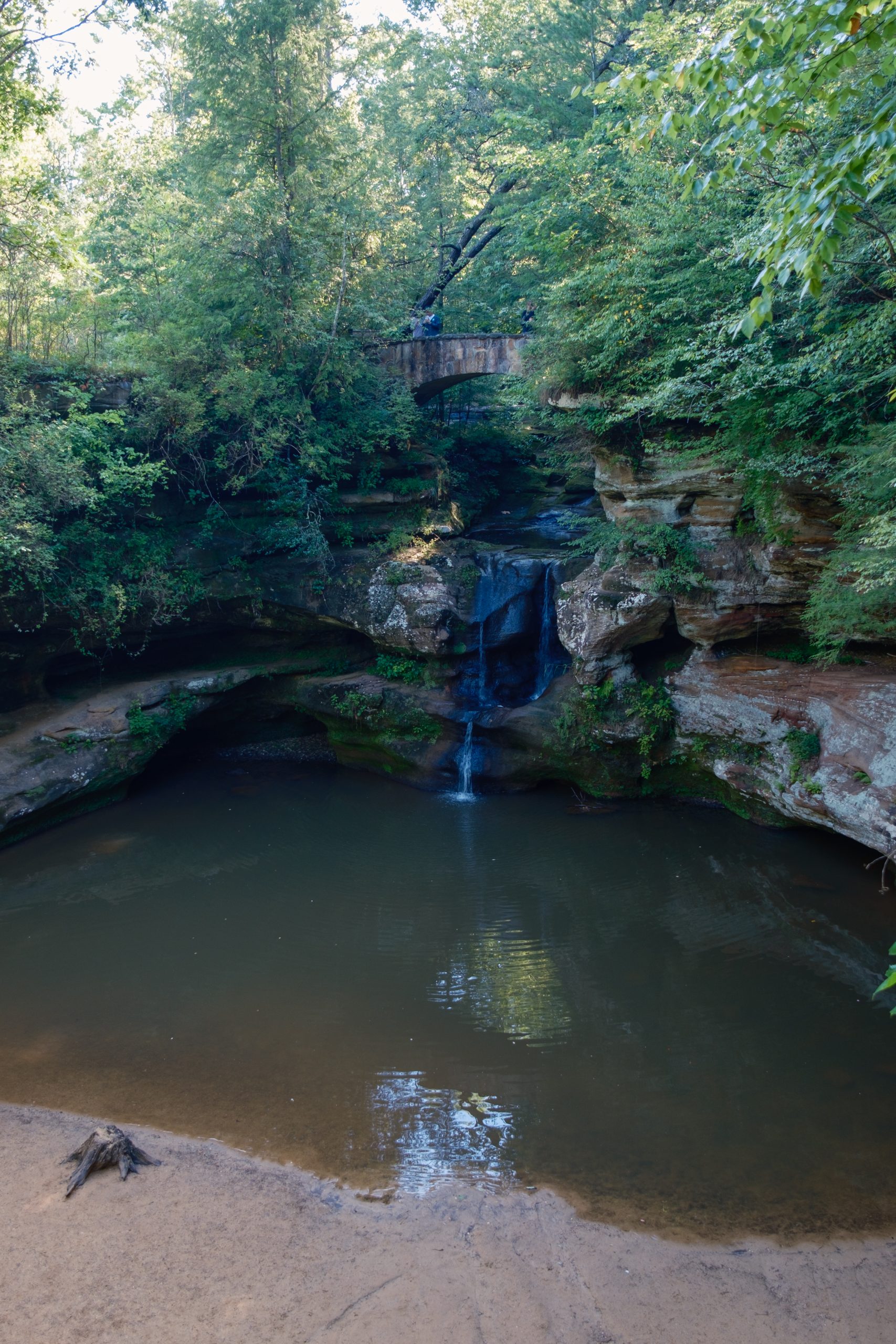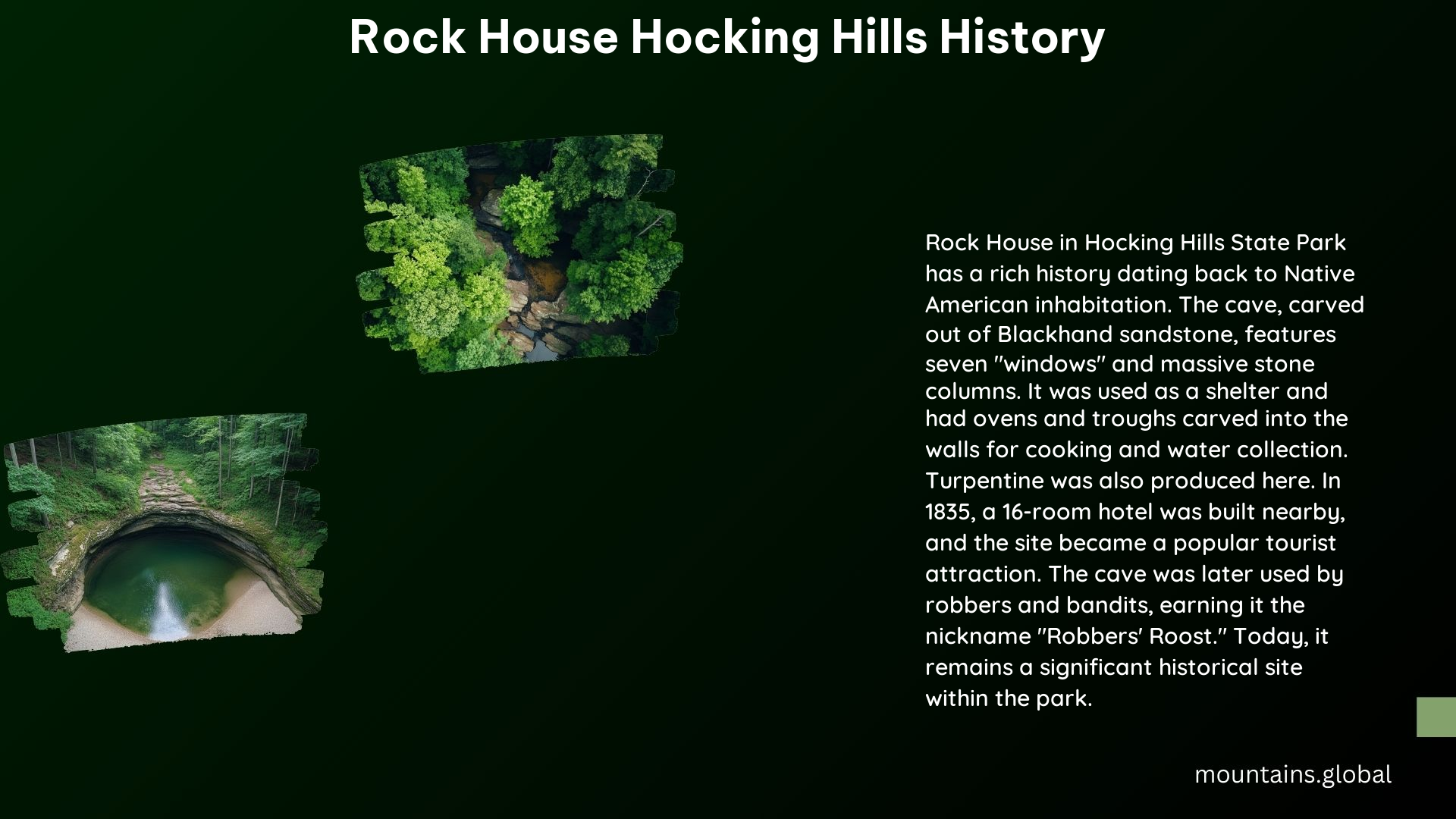Rock House in Hocking Hills State Park is a cave carved out of Blackhand sandstone halfway up a cliff face. The earliest inhabitants were Native Americans who used the cave as a shelter and resting place. Archaeological evidence remains of turpentine stills, ovens, and a water collection system carved out of the soft sandstone.
Native American Habitation and Turpentine Production

The Rock House has a rich history dating back thousands of years. Native Americans inhabited the cave, using it for shelter and various activities. They carved out turpentine stills, ovens, and a water collection system, which are still visible today. Turpentine was an essential commodity for Native Americans, used for medicinal purposes, crafting, and treating injuries. The production process involved placing pitch pine wood in a depression, weighing it down with rock, and building a fire on top. The heat would drive the wood sap out, which would flow down a channel to be collected in a vessel.
Water Collection System

The water collection system in Rock House catches rainwater that filters through the sandstone and runs through a channel in the cave. When full, the channel leads to one of the cave’s “windows” to escape, providing a steady supply of clean running water to the inhabitants.
Early Settlers and Tourism
In 1835, Colonel F.F. Rempel built a 16-room hotel near Rock House, which included a ballroom, livery stable, and a post office. Over time, Rock House became a popular tourist attraction, drawing visitors to explore its natural features and learn about its rich history.
Current Status and Visitor Information
Today, Rock House is a popular tourist attraction within Hocking Hills State Park. Visitors can hike to the cave and explore its natural features, including the seven “windows” and massive sandstone columns. The park offers guided hikes and educational programs to help visitors understand the history and significance of Rock House.
Key Details:
| Detail | Information |
|---|---|
| Location | Hocking Hills State Park, Ohio |
| Height | 25 feet high |
| Length | 200 feet long |
| Width | 20 to 30 feet wide |
| Features | Seven “windows,” massive sandstone columns, turpentine stills, ovens, and a water collection system |
| History | Used by Native Americans, early settlers, and later became a tourist attraction |
| Guided Hikes | Available through the park’s naturalist programs |
| Phone | 740-385-6842 |
| Cost | Free for guided hikes |
References
- Chalets At Hocking Hills. (2013, March 11). Tha Native American History of Rock House. Retrieved from https://www.chaletshh.com/hocking-hills/tha-native-american-history-of-rock-house/
- Ohio Department of Natural Resources. Rock House Cavern. Retrieved from https://ohiodnr.gov/go-and-do/plan-a-visit/find-a-property/rock-house-cavern
- North Coast Muse. (2012, September 27). Rock House – History and Geology. Retrieved from https://sally1029.wordpress.com/2012/09/27/rock-house-history-and-geology/
- Hocking Hills. Rock House at Hocking Hills State Park. Retrieved from https://www.hockinghills.com/rock_house.html
- Chalets At Hocking Hills. (2013, February 6). The History of Rock House. Retrieved from https://www.chaletshh.com/hocking-hills/the-history-of-rock-house/
